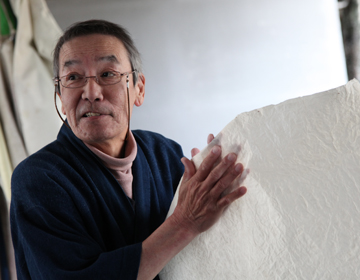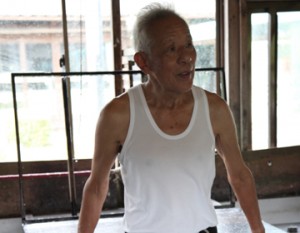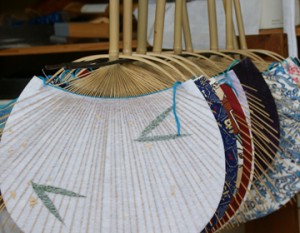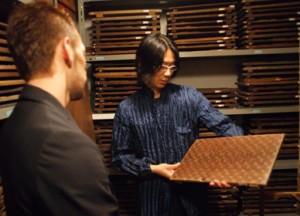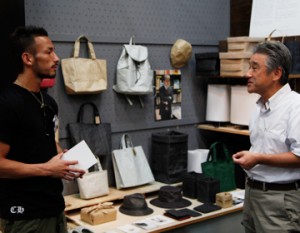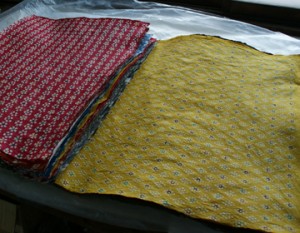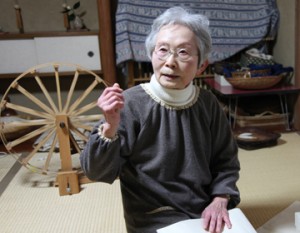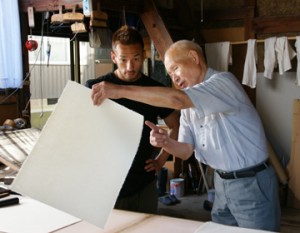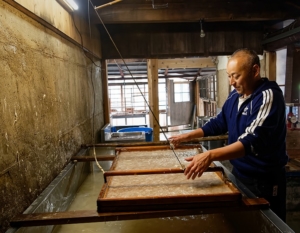Paper that keeps the writing intact even when wet
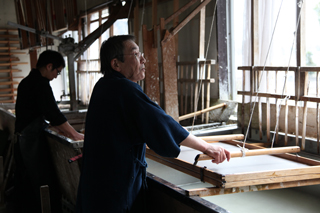
The history of Nishinouchi ”washi” goes back about 350 years.
This paper was used in the ”Dai Nihonshi” history book compiled by the Famous Mitsukuni Mito, otherwise known as Mito Komon. Its strongest feature is its strength. So it was used not only for ”shoji” paper screens, umbrellas, and lanterns, but also for accounting books recording the receivables. This is not only because it’s hard to tear, but according to Kikuchi, it is also because the writings do not bleed even when wet. ”So if the wholesalers had a fire, they threw the account book in the water. That way they will not lose records.” he said. This paper is that strong.
Products utilizing this strength
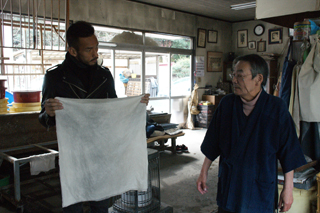
As we were discussing the strength of the paper, Kikuchi brought a piece of ”washi”. As we wondered what he was about to do with it, he abruptly soaked it in water and started twisting it like a wet rag. Nakata was totally taken by surprise. Kikuchi handed the paper to Nakata and told him to stretch it by pulling on both ends forcefully. It didn’t tear nor break. He tried many times, but there were no signs of tearing. He pulled it so hard that it made a loud pang pang noise, and water splashed from the paper. It was like pulling on a piece of cloth. This is because two pieces of paper with the fiber running vertically was pasted, with another that had horizontally running fiber with glue made from ”konnyaku” (jelly-like food made from a type of potato). That gave them this extraordinary strength and waterproof quality.
In Ibaraki, they utilize this paper for ”noren” curtains and cushion covers. They are the top selling items now. Strength of paper is still recognized as the quality of Nishinouchi rice paper.
The motivation from within.
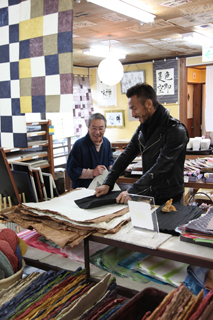
We interviewed Masaki Kikuchi , a first class ”washi” master. We also interviewed the paper and clothes artist Sadako Sakurai who said that she can’t spin a thread unless its Kikuchi’s rice paper. Only Kikuchi can make paper that’s strong and sensitive at the same time, she testified.
Kikuchi started his career as an ordinary office worker after he graduated school. He never meant to inherit the family business. But after awhile, he realized he was not happy working in the office and came home to become a craftsman. He says it was a hard way from there. His paper didn’t sell very well. It took him about 10 years for them to sell, and when he opened a shop, his customers educated him in many ways. That’s how he became a full fledged craftsman, he told us.
Kikuchi now makes paper with his son. He never told his son to inherit this business, but like him, his son worked as an office worker for a while before he voluntarily said he wanted to make paper.” It makes a whole lot of difference to be told to do something and to do it as a result of the inner motivation and interest in the job. It is really up to one’s motivation. ”



